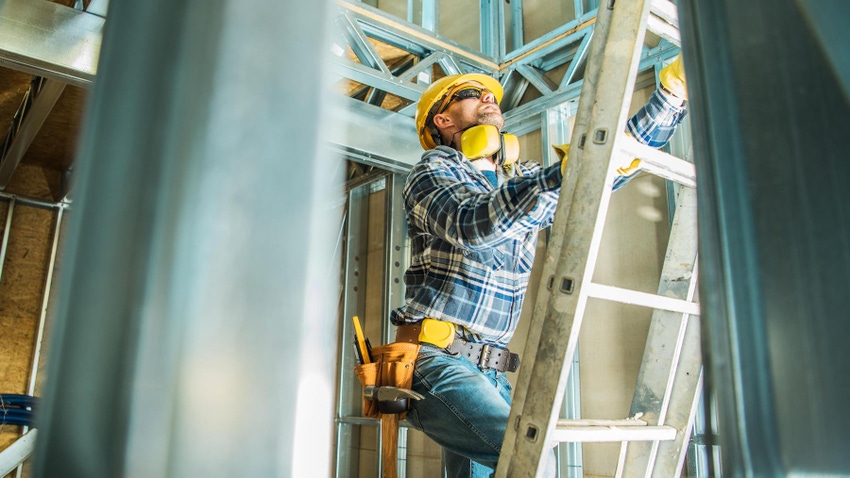How to Choose the Right Ladder for a Construction Jobsite
Knowledge of ladder types is crucial to making the right choice, as is understanding their duty ratings and materials.

Using the wrong ladder is one of OSHA's top construction citations, so knowledge of ladder types and materials and the products’ duty ratings is key to safe and proper application.
In the second half of the American Ladder Institute’s webinar on ladder and safety training in March, Werner senior product manager Eric Blankinship tackled strategies for choosing the ladder best suited to your jobsite.
“Sometimes people use the wrong tool for the job, but sometimes they just aren’t sure what the right tool is,” he said.
Here are the four steps to choosing the right ladder for your construction job:
1 | Assess the types of ladders available and their uses.
According to Blankinship, the four most common ladder categories are stepladders, leaning stepladders, extension ladders and multi-position ladders. Each job will differ as to which ladder is most appropriate; stepladders, for example, are designed for reaching ceiling spaces or other spaces where no wall is available to lean against, said Blankinship, while leaning stepladders are designed expressly to safely lean against walls or studs. Extension ladders and multi-position ladders have a wider variety of uses, but Blankinship emphasized the importance of reviewing your jobsite needs and choosing the most appropriate ladder for a given situation, rather than having a “one size fits all” mindset.
2 | Choose the right duty rating.
“The duty rating on a ladder accounts for the weight of the person plus the weight of their materials,” Blankinship said. “Exceeding load capacity may cause the ladder to collapse.”
There are five duty ratings recognized by ANSI and used by all manufacturers. Determine the most appropriate rating needed for your team members and the types of materials you need to transport up and down the ladder before choosing the ladder’s duty rating. The ratings' details are outlined on the American Ladder Institute’s website.
3 | Decide if a fiberglass or aluminum ladder is most appropriate.
“What that comes down to is whether you are working near electricity,” Blankinship said.
Fiberglass is non-conductive and safe around electricity, while aluminum is lightweight and cost effective—but cannot be safely used around electricity, he said.
4 | Complete a ladder safety inspection.
Once you’ve addressed the first three decisions needed when choosing a ladder, it is time to conduct a safety inspection. Blankinship suggests six main items to inspect: the top or tips of the ladder, rails and rungs, spreaders, ropes and pulley, duty rating and warning labels and the feet of the ladder. Look for points of weakness or wear and tear.
About the Author(s)
You May Also Like




